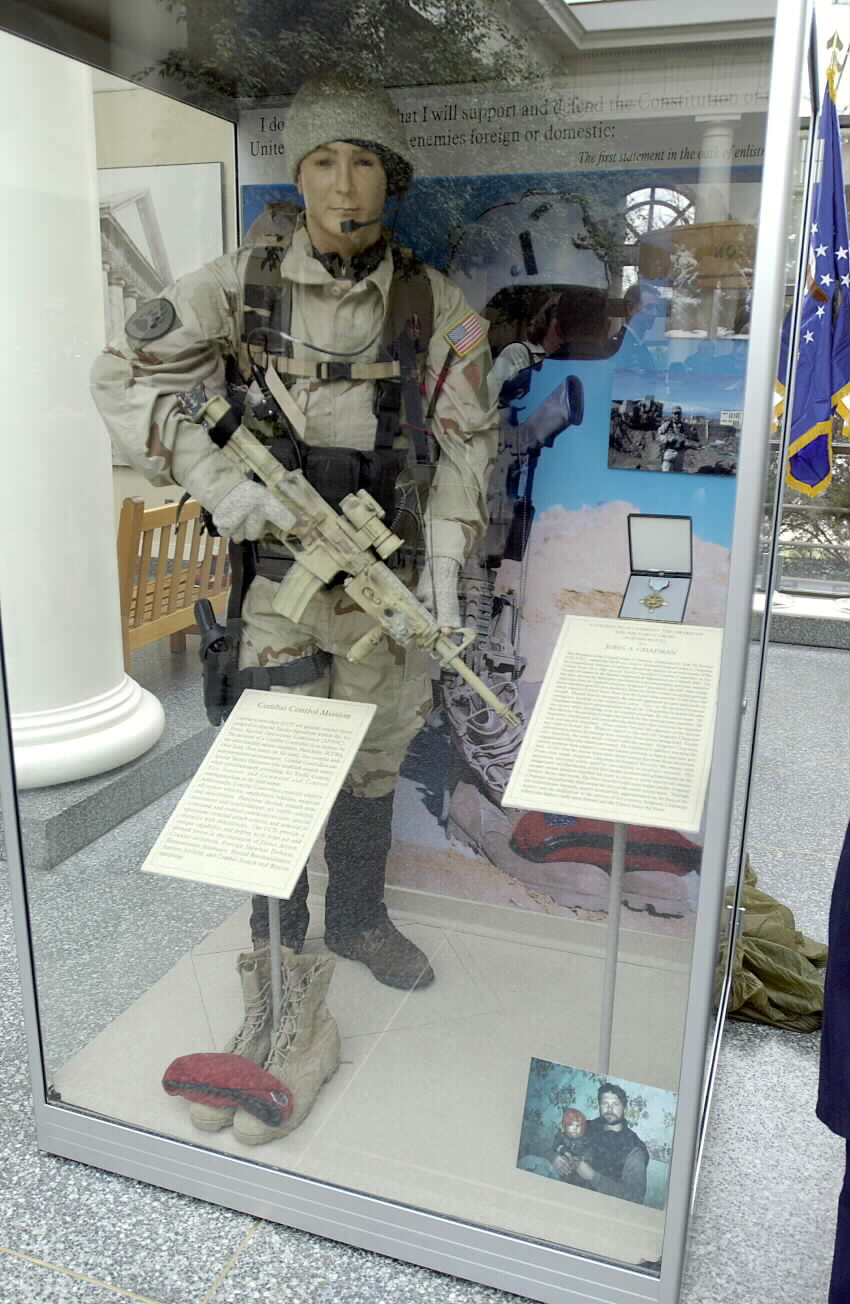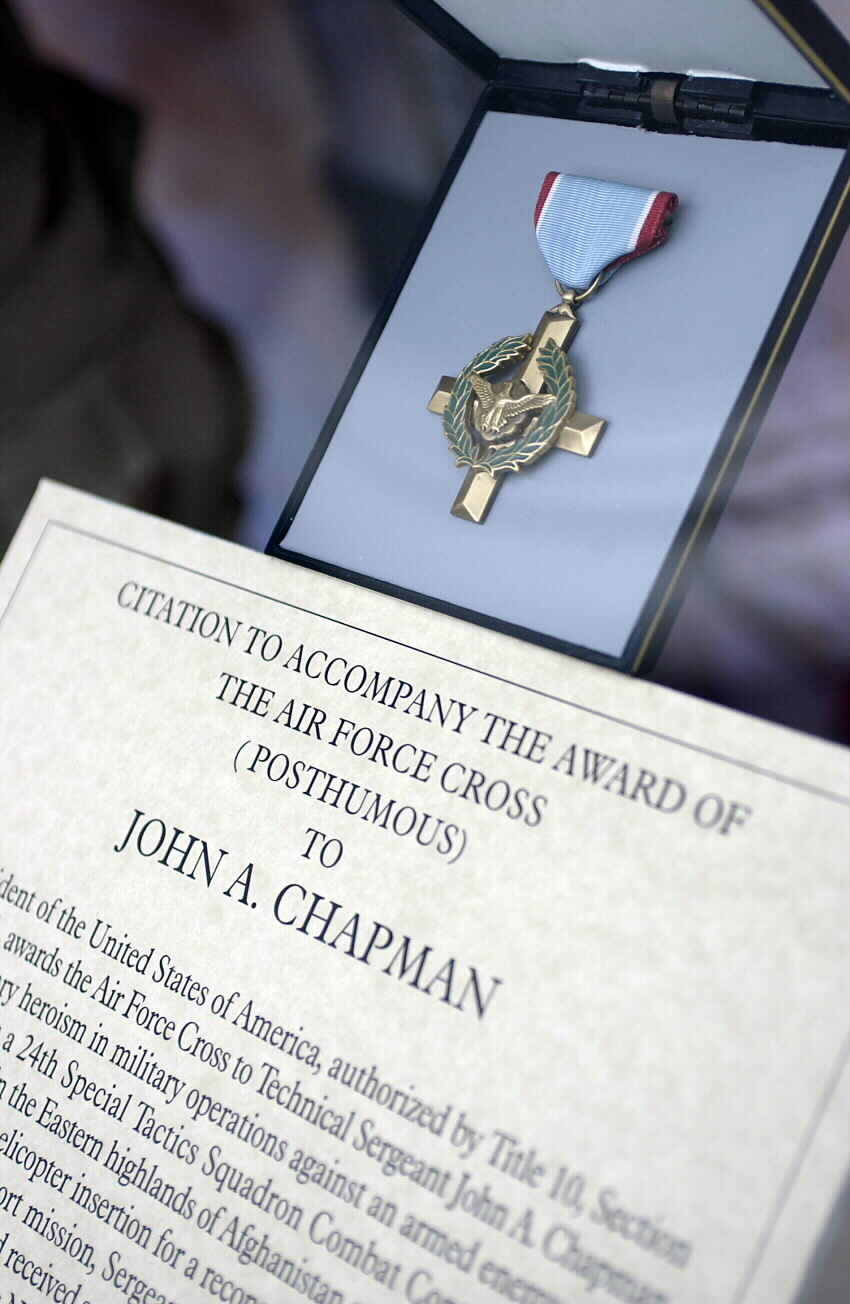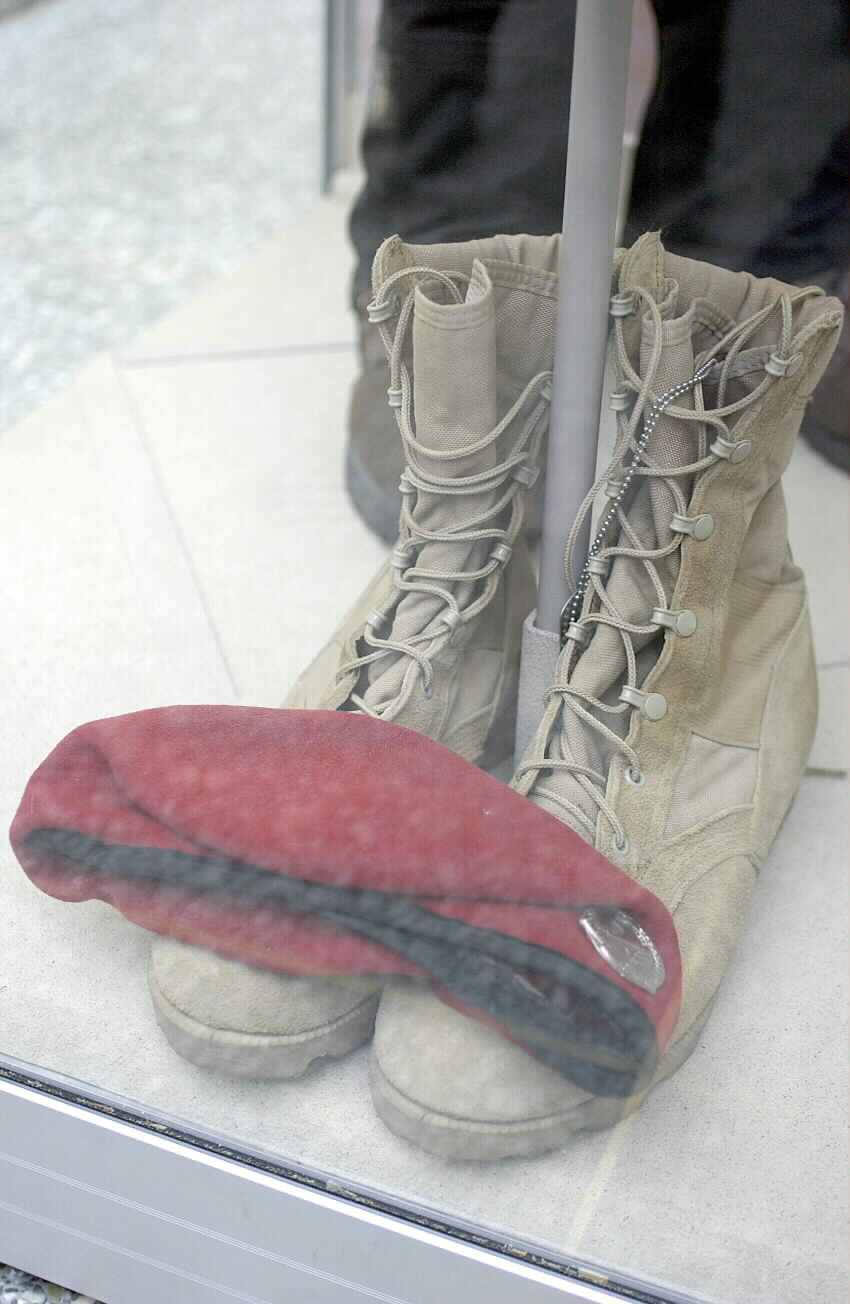by Master Sergeant Scott Elliott
Air Force Print News
9 January 2004
The secretary of the Air Force unveiled a memorial at Arlington National Cemetery on January 8, 2004, to honor the service’s highest-decorated combat controller.
Technical Sergeant John A. Chapman, from the 24th Special Tactics Squadron, was killed March 4, 2002, while fighting against the Taliban during Operation Anaconda in Afghanistan. He was posthumously decorated with the nation’s second-highest award for valor, the Air Force Cross.
The memorial, a glass-enclosed life-size model of a combat controller in full combat gear, features Sergeant Chapman’s award citation and photos of him on duty in Afghanistan. It will remain on display in the cemetery’s visitor center until March 15, after which it will move to Air Force Special Operations Command headquarters at Hurlburt Field, Florida, for two weeks. The display then will travel to the Air Force Enlisted Heritage Museum at the Gunter Annex of Maxwell Air Force Base, Alabama, where it will be permanently displayed beginning March 31, 2004.
A duplicate memorial will be on permanent display at Lackland Air Force Base, Texas.
“This display exemplifies all we value in the Air Force,” Air Force Secretary Dr. James G. Roche told Sergeant Chapman’s relatives and representatives of the combat control career field. “John’s personal bravery in the face of the enemy was emblematic of the warrior ethos.”
According to his award citation, Sergeant Chapman was attached to a Navy SEAL team when their helicopter was hit by enemy machinegun fire. A rocket-propelled grenade then hit the helicopter, causing a SEAL team member to fall from the aircraft into enemy-held territory.
Sergeant Chapman called in an AC-130 gunship to protect the stranded team after the helicopter made an emergency landing more than four miles from the fallen SEAL.
After calling in another helicopter to evacuate his stranded team, Sergeant Chapman volunteered to rescue his missing team member from the enemy stronghold. He engaged and killed two of the enemy before advancing and engaging a second enemy position — a dug-in machinegun nest.
From close range, the citation reads, Sergeant Chapman exchanged fire with the enemy from minimum personal cover until he succumbed to multiple wounds. His engagement and destruction of the first enemy position, and advancement on the second enemy position, enabled his team to move to cover and break enemy contact.
The Navy SEAL leader praised Sergeant Chapman unequivocally with saving the lives of the entire team.
“It takes a particular breed of warrior to accomplish these missions,” said Senior Master Sgt. James Lyons, commandant of the Air Force Combat Control School. “(It takes) an exceptional brand of courage, as well as confidence and patriotism, not mention just a little bit of daring.”
The memorial’s unveiling comes nearly a year to the day after Secretary Roche and Air Force Chief of Staff General John P. Jumper presented the Air Force Cross to Sergeant Chapman’s widow, Valerie.
“John died fighting terrorism, and we continue to live free today because of his sacrifice and the sacrifices of others,” the secretary said.
Sergeant Chapman’s aunt and uncle, Sallie and Dale Chapman, helped Secretary Roche unveil the memorial, pulling off the olive drab parachute that had covered it.
“It’s wonderful; what a tribute,” Sallie Chapman said, her voice breaking with emotion. “My favorite part is the photo of him holding the (Afghan) child. I think they captured, in just this small display, every part of him.”


Michael Robert Patterson was born in Arlington and is the son of a former officer of the US Army. So it was no wonder that sooner or later his interests drew him to American history and especially to American military history. Many of his articles can be found on renowned portals like the New York Times, Washingtonpost or Wikipedia.
Reviewed by: Michael Howard

